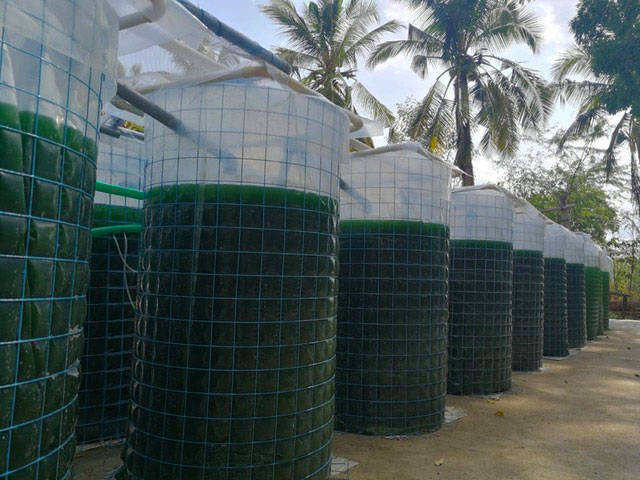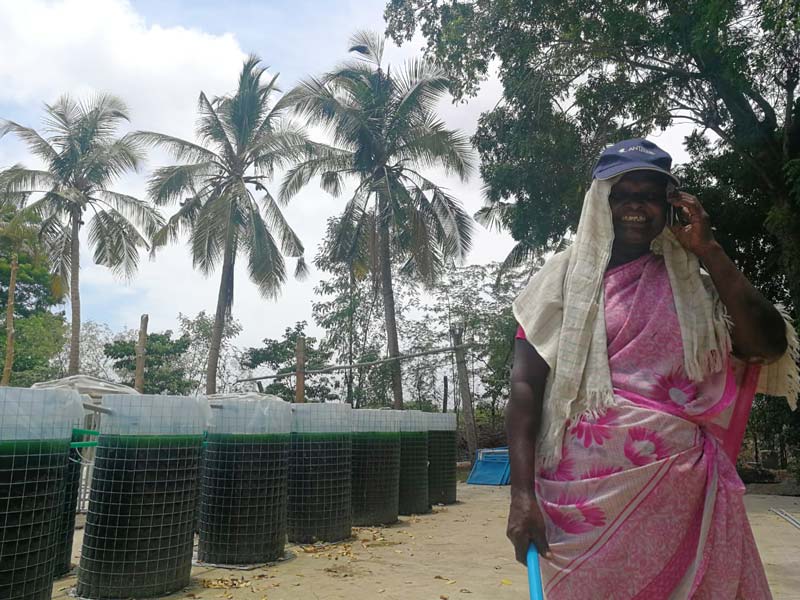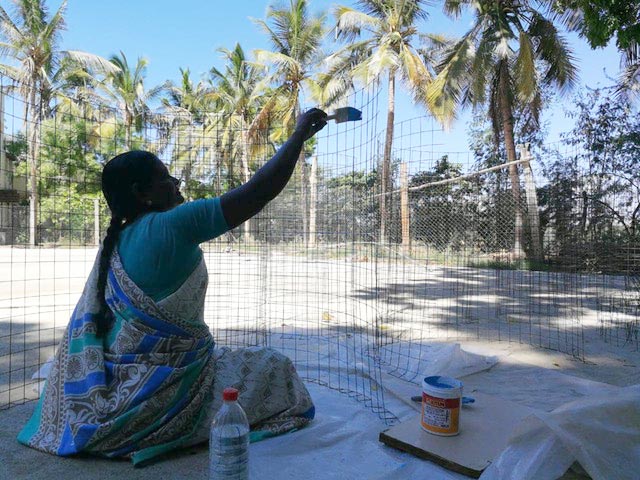What is Spirulina?
Spirulina (Arthrospira platensis) is a micro-organism, which grows rapidly in photosynthesis. It is referred to as a ‘cyanobacterium’. It is typically 0.1 millimetre in length, looking like a miniscule green filament rolled into a great many closely-bound spirals.
Spirulina has been eaten in some communities in Chad for centuries and to this day. Nowadays it is used principally as a dietary supplement of great nutritional and therapeutic value.
The first written records of spirulina date from the 16th century, It was eaten by the Aztecs who harvested it from lake, water, mixing it with maize to eat.
Spirulina resurfaced in the 1950s, when it was (re-)discovered by a mission of European scientists in Chad.

Spirulina Benefits
High Protein Content
Between 50 and 70% of its dry weight, a level almost twice as high as for soya
High Vitamin A Content
One gram of spirulina covers the daily requirements of vitamin A for an adult.
High B12 Content
Exceptionally high vitamin B12 content(four times higher than raw liver).
High Iron Content
Exceptionally high iron content and a high content of minerals such as phosphorus, potassium, calcium, magnesium, selenium and iodine
Rich in Vitamins
Vitamins B1, B2, B3, B5, B6, B7, B8 and B9, vitamin D, vitamin E and vitamin K
Source of Zinc
Excellent source of zinc, when produced in growth tanks to which zinc has been added.
8 Essential Aminoacids
The eight essential amino acids which the body cannot synthesise
15 Pigments
Including chlorophyll and phycocyanin, which have anti-inflammatory, antioxidant and antitumour properties

How Spirulina can tackle malnutrition?
In 1999, at the World Nutrition Congress, Antenna and the Medical College of Madurai presented the results of the clinical trials which were conducted in southern India. Main finding was that a daily dose of 1 to 3 grams of spirulina, over a period of four to six weeks, could be sufficient to cure young children aged five years or younger of mild to moderate malnutrition.
The study ended with a recommendation to the Indian government about the supply of free spirulina in schools, particularly in deprived regions.
Spirulina as sustainable model for villages
Spirulina cultivation is also a way for the poorest of the poor to create a sustainable economic activity. It is here – in promoting the development of local communities – that spirulina stands out clearly from the ready-to-use dietary supplements that are imported and distributed by certain large international organisations.
Local production means that there is a local supply, separate from the broader market, and from international policies.
Given the quantity of protein produced, it requires very little space – 15 times less than sugar cane, 20 times less than soya and 250 times less than rice. It needs three to four times less water than soya, five times less than maize, and 40 times less than beef

Our Current Situation
Our main objective of spirulina program is to empower rural women and children in combating malnutrition through the local production and distribution of spirulina.
At the moment we are in the process of modernizing our spirulina cultivation model. We are currently testing a bioreactor technology kit for spirulina cultivation. This vertical production method heightens productivity and guarantees a clean growing medium.
This model will be later used together with our partner villages to allow women to produce high-quality spirulina for their own consumption and create an income-generating activity in their villages.

